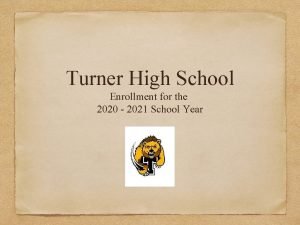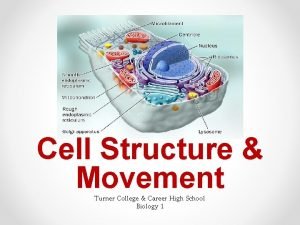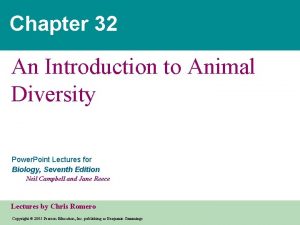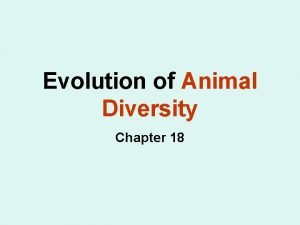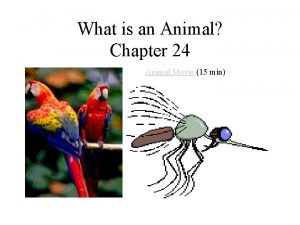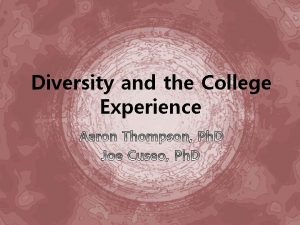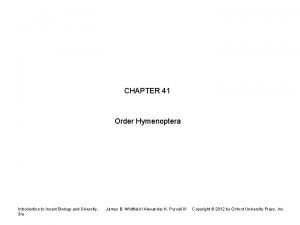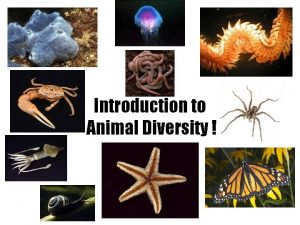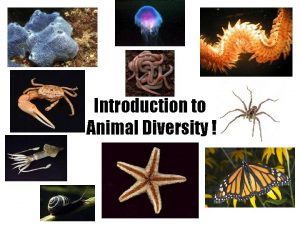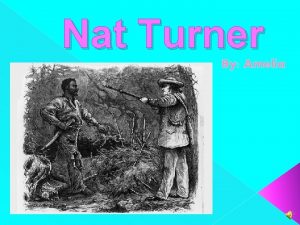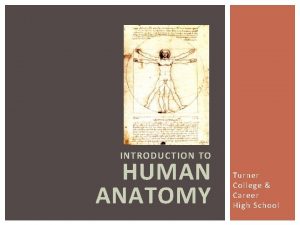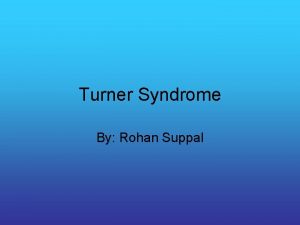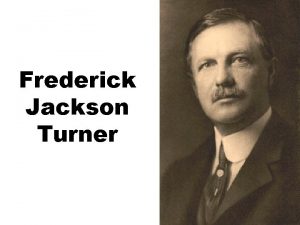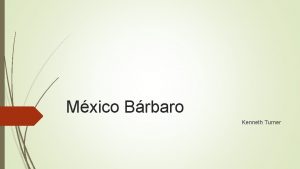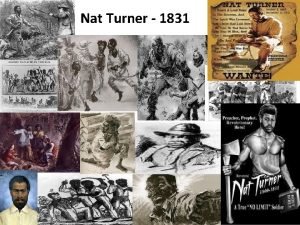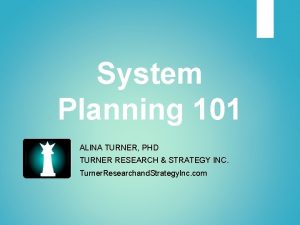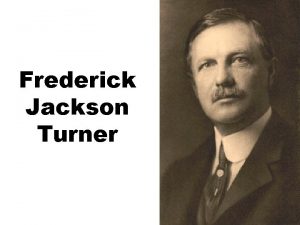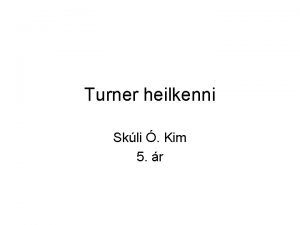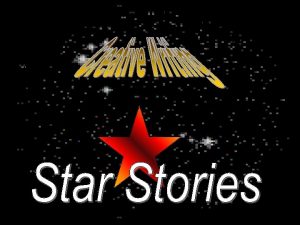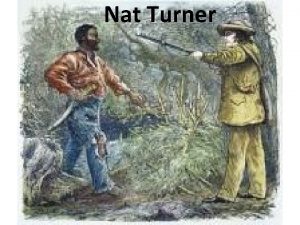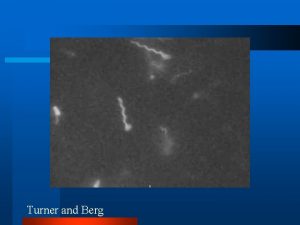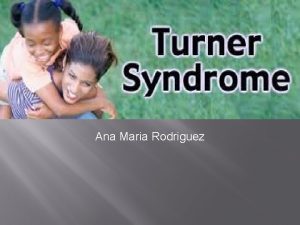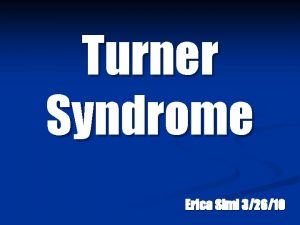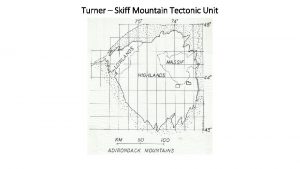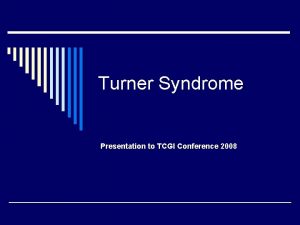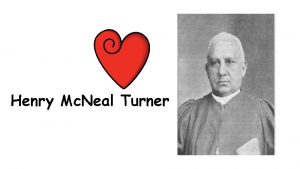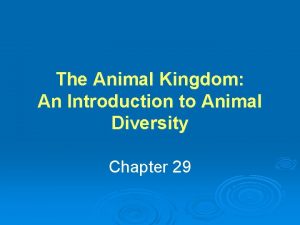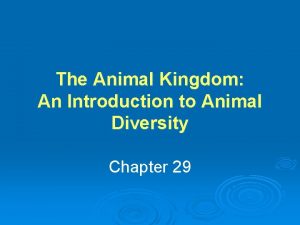AN INTRODUCTION TO ANIMAL DIVERSITY Turner College Career



























- Slides: 27

AN INTRODUCTION TO ANIMAL DIVERSITY Turner College & Career High School 2015

WHAT CHARACTERISTICS ARE COMMON TO ALL ANIMALS? Eukaryotic NO cells cell wall Multicellular Cell specialization Heterotrophic Reproduction/Development

CATEGORIES OF ANIMALS Invertebrates: Sea 95%; animals without backbones stars, worms, jellyfish, & insects Vertebrates: Fish, 5%; animals with backbones amphibians, reptiles, birds, mammals

ALL ABOUT ANIMALS What does an animal do when it respires? They What take in oxygen and give off carbon dioxide. does the excretory system of most animals do? Helps maintain homeostasis by eliminating ammonia quickly or converts it into a less toxic substance that is removed from the body. Animals respond to events in their environment using specialized cells called nerve cells.

GENERAL CHARACTERISTICS 1. Feeding: Heterotrophic, cannot make their own food. 2. Support: Developed skeletal & muscular system. 3. Habitat: Body evolved to suit environment. 4. Cell: Multicellular, eukaryotic. 5. Movement: Most are motile, but some are sessile at some point in their lives. 6. Reproduction: Varies among the Phyla.

TYPES OF FEEDERS Type of Feeder Herbivore Carnivore Omnivore Filter feeder Detritivores Description Feeds on plants. Feeds on other animals. Feeds on both plants and animals. Aquatic; strain tiny floating organisms from the water. Feeds on decaying plant and animal material.

SUPPORT Exoskeleton: a rigid external covering for the body in some vertebrate animals, providing both support and protection. Endoskeleton: an internal skeleton, such as the bony or cartilaginous skeleton of vertebrates.

BODY CAVITIES Body cavity may be present or absent or false. Coelomate – cavity present. Pseudocoelomate – false cavity present. Acoelomate – no cavity present. Coelom protects organs, body, etc.

COELOMATES Coelomates: “true-coelom”. Have a fluid-filled space separating digestive tract from outer covering. Space forms from the MESODERM.

PSEUDOCOELOM Pseudocoelom: Body “false coelom”. cavity derived from the blastocoel, NOT from mesoderm.

ACOELOMATES Acoelomates: Organisms without body cavities.

ANIMAL SYMMETRY Bilaterally Dorsal symmetrical animals have: (top) side and Ventral (bottom) side Anterior (head) and Posterior (tail) ends Cephalization - the development of a head

ADVANTAGES OF SEGMENTATION Segmentation allows different body regions to develop for different purposes or uses. Efficient Detect movement prey Specialization

ANIMAL MOBILITY Motile: ability to move. What Muscular contractions, usually in combination with support of the skeletal system. Sessile: Why enables motile animals to move around? stationary in adult life form. do sessile animals need musculature? Muscles help sedentary animals feed and pump water and fluids through their bodies. Filter feeders: strain tiny floating organisms from the water.

ANIMAL REPRODUCTION What type of reproduction maintains genetic diversity in populations? How? Sexual reproduction; by improving species’ ability to evolve when the environment changes therefore increasing their chance of survival. What does asexual reproduction allow an animal to do? It allows animals to increase their numbers rapidly therefore increasing their chance of survival. Types include: binary fission, budding, fragmentation, parthenogenesis.

EARLY DEVELOPMENT OF ANIMALS What is another name for a fertilized egg? Zygote What does a zygote form after it undergoes a series of divisions? Blastula Protostome: development of an organism from mouth to tail. (ex. Invertebrates). Deuterostome: development of an organism from tail to mouth. (ex. vertebrates. ).

REPRODUCTION Sperm fertilizes an egg zygote.

DEVELOPMENT Sperm fertilizes an egg zygote. Zygote undergoes cleavage. Mitotic cell division and cytokinesis, but NO cell growth

DEVELOPMENT Zygote Cleavage Blastula (hollow space inside = Blastocoel)

DEVELOPMENT Zygote Cleavage Blastula Gastrulation

ORGANIZATION OF TISSUES Gastrulation Ectoderm Animal embryos form germ layers: outer covering/not seen in some Mesoderm middle layer: muscles and all other organs Endoderm innermost layer: lines digestive tract, liver and lungs

BODY SYMMETRY Symmetry in biology is the balanced distribution of duplicate body parts or shapes. Radial symmetry: body parts that repeat around the center. Bilateral symmetry: a single plane divides the body into to equal parts. Asymmetry: irregular shape. Ex: Lobster Ex: Sea Anemone

COMPARING VERTEBRATES: DIGESTIVE SYSTEM Class Unichordata Class Reptilia Class Chondrichthyes Class Mammalia Class Aves

COMPARING VERTEBRATES: RESPIRATORY SYSTEM Class Amphibia Class Reptilia Pg. 1001 Class Mammalia Class Aves Pg. 863

COMPARING VERTEBRATES: CIRCULATORY SYSTEM Pg. 824 Pg. 854 Pg. 885

COMPARING VERTEBRATES: NERVOUS SYSTEM Pg. 886

EVOLUTIONARY CLADOGRAM Non-vertebrates: Urochordata Class Agnatha: Jawless fish Class Chondrichthyes: Sharks Class Osteichthyes: Bony fish Class Amphibia: Amphibians Class Reptilia: Reptiles Class Aves: Birds Class Mammalia: Mammals
 Infinite campus turner
Infinite campus turner Turner college and career high school
Turner college and career high school Introduction to animal diversity
Introduction to animal diversity Genetic diversity vs species diversity
Genetic diversity vs species diversity Genetic diversity vs species diversity
Genetic diversity vs species diversity National career clusters framework
National career clusters framework Formulas for career success
Formulas for career success Animal diversity chapter
Animal diversity chapter Tiburonia granrojo
Tiburonia granrojo Chapter 32 an overview of animal diversity
Chapter 32 an overview of animal diversity Diversity and the college experience
Diversity and the college experience Animal science career cluster
Animal science career cluster Career competency framework
Career competency framework Lexile levels by grade
Lexile levels by grade What do lexile levels mean
What do lexile levels mean Vocabulary power plus for college and career readiness
Vocabulary power plus for college and career readiness Vriendskaplike brief
Vriendskaplike brief Fleming career services
Fleming career services College and career readiness standards math
College and career readiness standards math American career college optimal resume
American career college optimal resume Theodore roosevelt college and career academy
Theodore roosevelt college and career academy Cpcc transcript
Cpcc transcript Introduction to insect biology and diversity
Introduction to insect biology and diversity Plant cell outline
Plant cell outline Venn diagram for animal and plant cells
Venn diagram for animal and plant cells Animal rights versus animal welfare
Animal rights versus animal welfare Career development interventions
Career development interventions Finance career cluster vocabulary
Finance career cluster vocabulary
